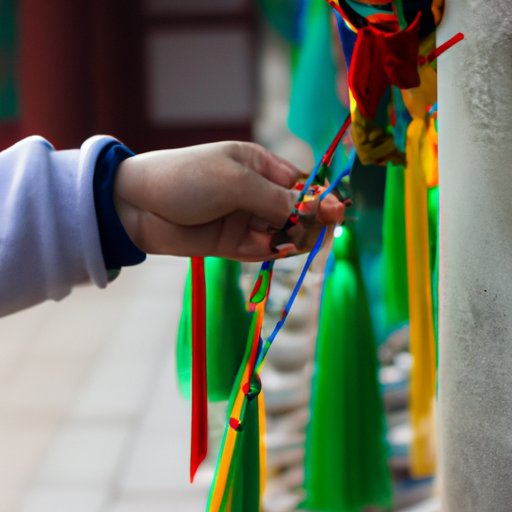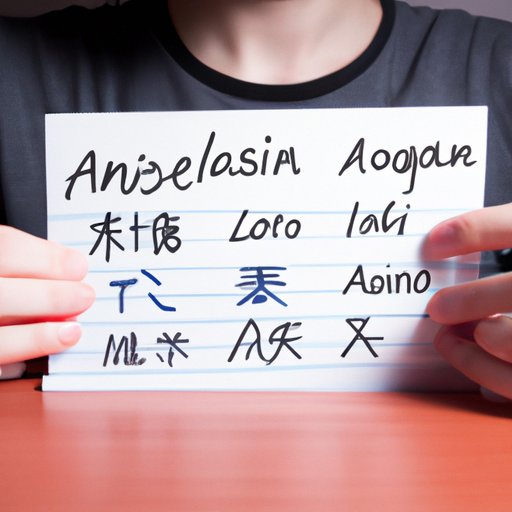Introduction
Asian culture is a term used to describe the beliefs, customs, traditions, religions, social hierarchies, and artistic expressions that are found in countries such as China, Japan, India, South Korea, Thailand, and more. These countries have a long and varied history, and their cultures are diverse and complex. In this article, we will explore the various aspects of Asian culture, including its geographical influences, traditional customs, art forms, religious practices, cuisines, and languages.
Examining the Diversity of Asian Cultures
Asia is home to a wide variety of cultures, and each region has its own unique characteristics. The continent is divided into four main regions: East Asia, South Asia, Southeast Asia, and Central Asia. Each of these regions has its own distinct culture, with its own language, cuisine, art forms, and religious practices.
Geography has had a strong influence on the development of Asian cultures. For example, East Asian cultures have been heavily influenced by Chinese culture, while South Asian cultures have been shaped by Indian culture. Similarly, Southeast Asian cultures have been heavily influenced by Hinduism, Buddhism, and Islam, while Central Asian cultures have been strongly influenced by the nomadic cultures of the steppes.
The history of each region also plays a role in the development of its culture. For example, the Mongol Empire was an important political force in Central Asia, while the Silk Road played a major role in connecting the cultures of East and South Asia. In addition, the colonization of many Asian countries by European powers had a significant impact on the development of their cultures.

Exploring the Traditions and Customs of Asia
Family values are a cornerstone of Asian culture, and they are often based on Confucian principles such as filial piety and respect for elders. Social hierarchy is also an important aspect of many Asian cultures, with different levels of status and power depending on one’s family background, occupation, and age.
Marriage customs vary across the region, but arranged marriages are still common in many areas. In some cultures, marriage is seen as a union between two families rather than just two individuals. Marriage ceremonies also differ greatly from country to country, with some involving elaborate rituals and others being much simpler.

Investigating the Arts and Music of Asia
Asian cultures have a rich tradition of visual art, including painting, sculpture, pottery, and calligraphy. Theater arts such as puppetry, dance, and opera are also popular in many areas. Musical styles vary widely from region to region, but traditional instruments such as the pipa (Chinese lute) and sitar (Indian stringed instrument) are commonly used in many countries.

A Look at the Religious Beliefs and Practices of Asia
The major religions of Asia include Hinduism, Buddhism, Taoism, Confucianism, Islam, Christianity, and Sikhism. Many of these religions have their own sacred sites and festivals, which are important points of pilgrimage and celebration. Additionally, there are a number of smaller religions and spiritual practices, such as Shinto and Jainism.
An Overview of the Cuisine of Asia
Asian cuisines vary widely, but certain ingredients and preparation methods are common throughout the region. Rice is a staple food in many countries, and soy sauce, fish sauce, and chili peppers are used in many dishes. Regional specialties such as sushi, dim sum, and tandoori chicken are popular around the world.
Food etiquette also differs from country to country. For example, in some cultures it is considered rude to eat with your hands, while in others it is perfectly acceptable. Table manners, such as how to properly use chopsticks, also vary from region to region.

Studying the Languages of Asia
Asia is home to a wide variety of languages, including Chinese, Japanese, Korean, Hindi, Thai, and Urdu. These languages all have their own writing systems and dialects, which can make communication difficult between different countries. Additionally, many countries have multiple languages spoken within their borders, making it even more challenging to communicate.
Understanding the Cultural Impact of Asia on the World
The cultural impact of Asia on the world is undeniable. Global migration has spread Asian culture to all corners of the globe, and it has had a profound effect on many aspects of life. Economically, Asian countries have become major players in the global economy, and the exchange of goods, services, and ideas has been essential to the growth of many countries.
Culturally, Asian culture has been adopted and adapted by people around the world. Traditional Asian art forms such as painting and music have gained international recognition, and the cuisine of Asia has become popular worldwide. Additionally, the languages of Asia have been adopted by many countries, and the spiritual and philosophical teachings of the region have had a profound impact on many people.
Conclusion
Asian culture is incredibly vast and diverse, and it encompasses a wide range of beliefs, customs, and traditions. From the various regions and their geographical influences to the traditional customs, arts, religious practices, cuisines, and languages, there is much to explore and appreciate about this fascinating part of the world. Understanding Asian culture is key to understanding the global impact it has had on the world today.
(Note: Is this article not meeting your expectations? Do you have knowledge or insights to share? Unlock new opportunities and expand your reach by joining our authors team. Click Registration to join us and share your expertise with our readers.)
